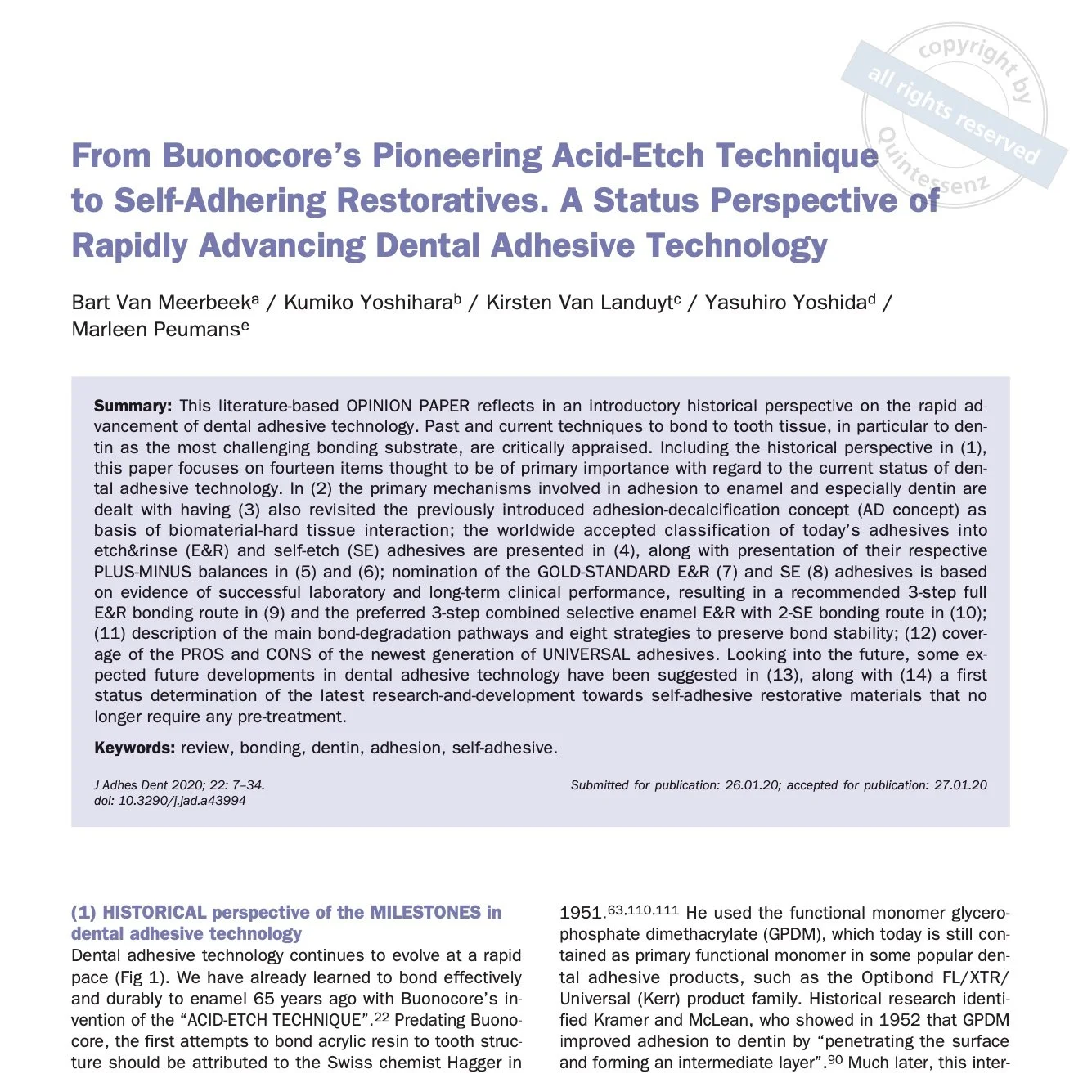
Biomimetic Dentistry
Biomimetic dentistry, a type of tooth-conserving dentistry, treats weak, fractured, and decayed teeth in a way that keeps them strong and seals them from bacterial invasion. In dental practices around the world, Biomimetic Dentistry has practically eliminated cutting teeth down for crowns and preventable root canal treatment.
Biomimetic dentistry is a paradigm and not a specific material or a technique — it’s achieving maximum bond strengths, long-term marginal seal, pulp vitality, and decreased residual stress. The natural tooth is the perfect structure as a result of its various properties including biology, function, esthetics, and biomechanics. In the Biomimetic approach, optimal restorative materials and techniques “mimic” these properties of natural teeth and strive to preserve pulp vitality by conserving maximum intact tooth structure.

Six Lessons Approach (SLA) to Biomimetic Dentistry
Davey and David Alleman
L-R: Dave Wold, Ashley Chung, Dafina Doberdoli, Patrick Calalang
It may seem like Biomimetic Dentistry sprouted up overnight, but Dr. Alleman’s work in the field of biomimetic restorative dentistry has roots that go back several decades. Dr. Alleman’s study of biomimetic dentistry began in 1995 when he wanted to quit dentistry altogether. Having practiced traditional dentistry since graduating from the University of the Pacific in 1978, he grew increasingly frustrated with restorative outcomes that still resulted in sensitive or painful teeth, failed fillings, crowns and root canals.
In a final attempt to find answers to his frustrations, Dr. Alleman enrolled in a 2-day class with Ray Bertolotti. It was there he learned about a new approach called adhesive dentistry.
“This inspired me to find better ways to fix teeth. I knew the answers were out there. Someone just had to put in the time to bring the research together.” From the thousands of hours he spent visiting dental school libraries around the United States and reviewing and organizing the literature he found there, Dr. Alleman distilled seven areas of science that he incorporated into his practice immediately:
Diagnosing caries removal using caries-detecting dye
Eliminating gaps under restorations and cracks into dentin
Using gold-standard bonding systems
C-Factor stress relief
Pulpal biology
Dental hard tissue differences
Managing occlusal forces
Dr. Alleman condensed thousands of articles into a core collection of 128 articles. That peer-reviewed literature formed the techniques he had been practicing, which he formalized into a set of protocols he called the Six Lessons Approach, which he now teaches in the Biomimetic Mastership program at the Alleman Center of Biomimetic Dentistry (ACBD) with his son Davey Alleman, and a team of mentors — Patrick Calalang, Ashley Chung, Dafina Doberdoli, and Dave Wold.
BONDED. Incubator is a little taste of what the Mastership is, just for Malaysians. Together with the ACBD, BONDED aims to redefine the playbook for Restorative Dentistry in Malaysia with a catered curriculum relevant to Malaysian dentists.








